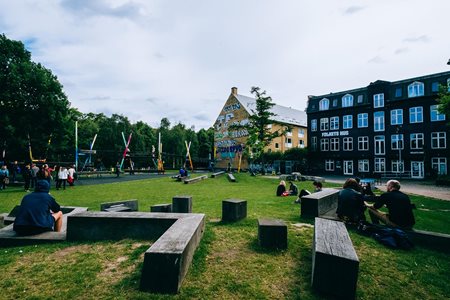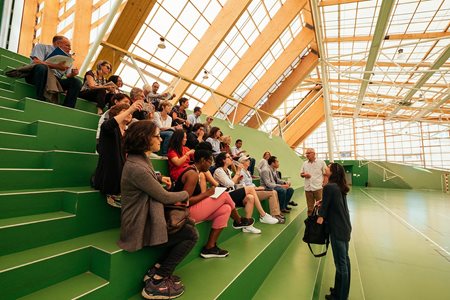How do you design a public space for everyone—a space that is not only welcoming and inclusive but fosters a sense of community and well-being?
Kenneth Balfelt says you need to be strategically unprepared. That is, you should start with only half a plan for what your space will look like, because the other half must come from the users of that space—whether they’re young or old, working parents or retirees, or people who are homeless.
I met Balfelt last summer while on a study tour organized and sponsored by the Robert Wood Johnson Foundation and the Gehl Institute in Copenhagen, where I was struck not only by the inclusiveness of the public spaces but by the respect, trust, and dignity they reflected.
 For example, Folkets, or “People’s,” Park, is an apt name for a public space established in 1971 by local residents. The small park underwent a complete renovation in 2008, but when gang members assaulted four Danish tourists there several years later, residents demanded further change to make the park safer. They wanted a true people’s park that everyone could enjoy and feel comfortable using.
For example, Folkets, or “People’s,” Park, is an apt name for a public space established in 1971 by local residents. The small park underwent a complete renovation in 2008, but when gang members assaulted four Danish tourists there several years later, residents demanded further change to make the park safer. They wanted a true people’s park that everyone could enjoy and feel comfortable using.
Balfelt, an artist, was assigned to the project. He approached it, however, not as a designer or an architect, but as a mediator. His role, as he saw it, was to facilitate a creative process that allowed all members of the community to shape and then achieve a common vision for the park. In fact, his contract with the municipality specified that he could not guarantee what the result of this process would look like. His interest in Folkets Park, he said, was not to make money but to generate greater “community and love.”
This was a unique community development project; the process was as important, maybe even more important, than the product. At its heart, the Folkets Park project was about creating social change: enabling people from very different walks of life to feel safe and comfortable when sharing the same space. That’s a much more complex endeavor than designing a playground or figuring out where to put new benches.
Success required the collection of honest and unfiltered perspectives from everyone who wanted to use the space. That meant holding dozens of convenient, accessible meetings with small groups of people so they felt free to share their views. It meant actively listening to them. And, perhaps most importantly, it meant identifying shared values.
In a shared-values approach, all users have a legitimate perspective. So, although many residents wanted changes that would improve the park’s safety, Balfelt and his team also respected the viewpoint of homeless people concerned about flooding the park with light at night. That would make them feel vulnerable and exposed, they said. As a result, Balfelt opted for softer, strategically placed lighting to illuminate pathways at night.
 At NeighborWorks America, my role is to figure out how our work in community development is both people- and place-centered. This trip to Copenhagen gave me a lot to think about.
At NeighborWorks America, my role is to figure out how our work in community development is both people- and place-centered. This trip to Copenhagen gave me a lot to think about.
I’m interested in figuring out how we in community development can work in a more holistic manner that recognizes and respects the needs and values of all users. And I want to learn how we can align our grantmaking and measurement processes to support this holistic lens. I recognize this will require a culture change; our current mindset focuses on projects, deadlines and approvals—tangible accomplishments. Coming up with metrics that also emphasize less tangible, but critical, characteristics like dignity, respect and inclusion is difficult.
Yet, I’m convinced it can be done.
We need to recognize and support processes that not only engage people from all perspectives but cultivate trust in both the process and each other. That’s how we identify our common values, and it’s how we develop inclusive public spaces. And at its best, that is what community development does.
My experience in Copenhagen affirmed for me that public place-making has an important role in creating social change, equity and inclusion. It affirmed that my own role in all this is to link, build, translate and bridge, because everything I do nationally must be meaningful locally.
That’s what it means to be strategically unprepared. I am challenged—and I challenge all of us in this field—to learn this skill. And it is a skill to leave our preconceived designs and solutions at the door, serve as mediators between diverse perspectives facilitate the recognition of shared values and—of course—listen with an open mind and compassion.
It takes both discipline and humility to work in this way. But if we are serious about creating public spaces for everyone, we need to work with everyone.
So, enter your next project with half a plan—and get the other half from everyone else.
01/17/2018

